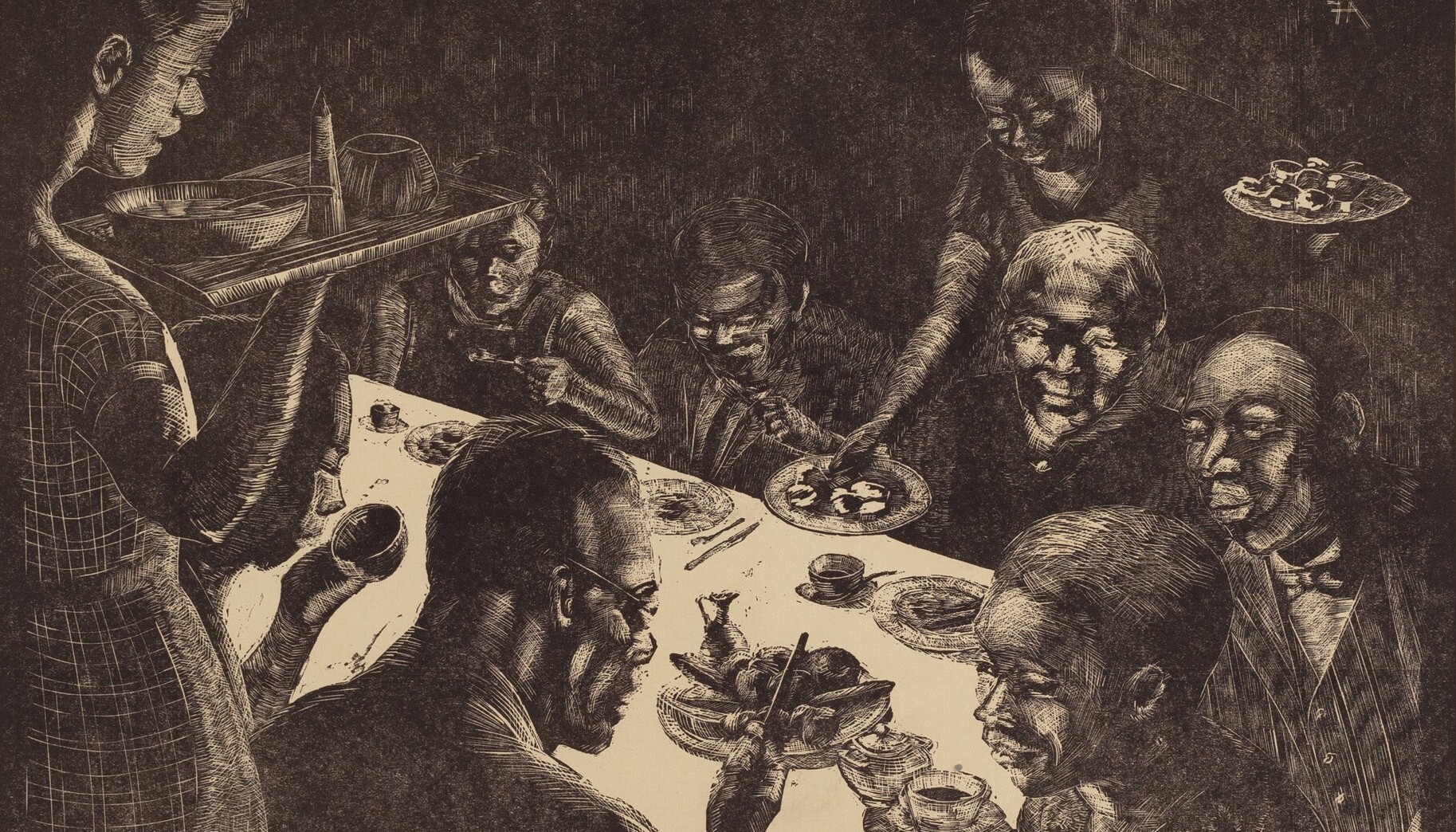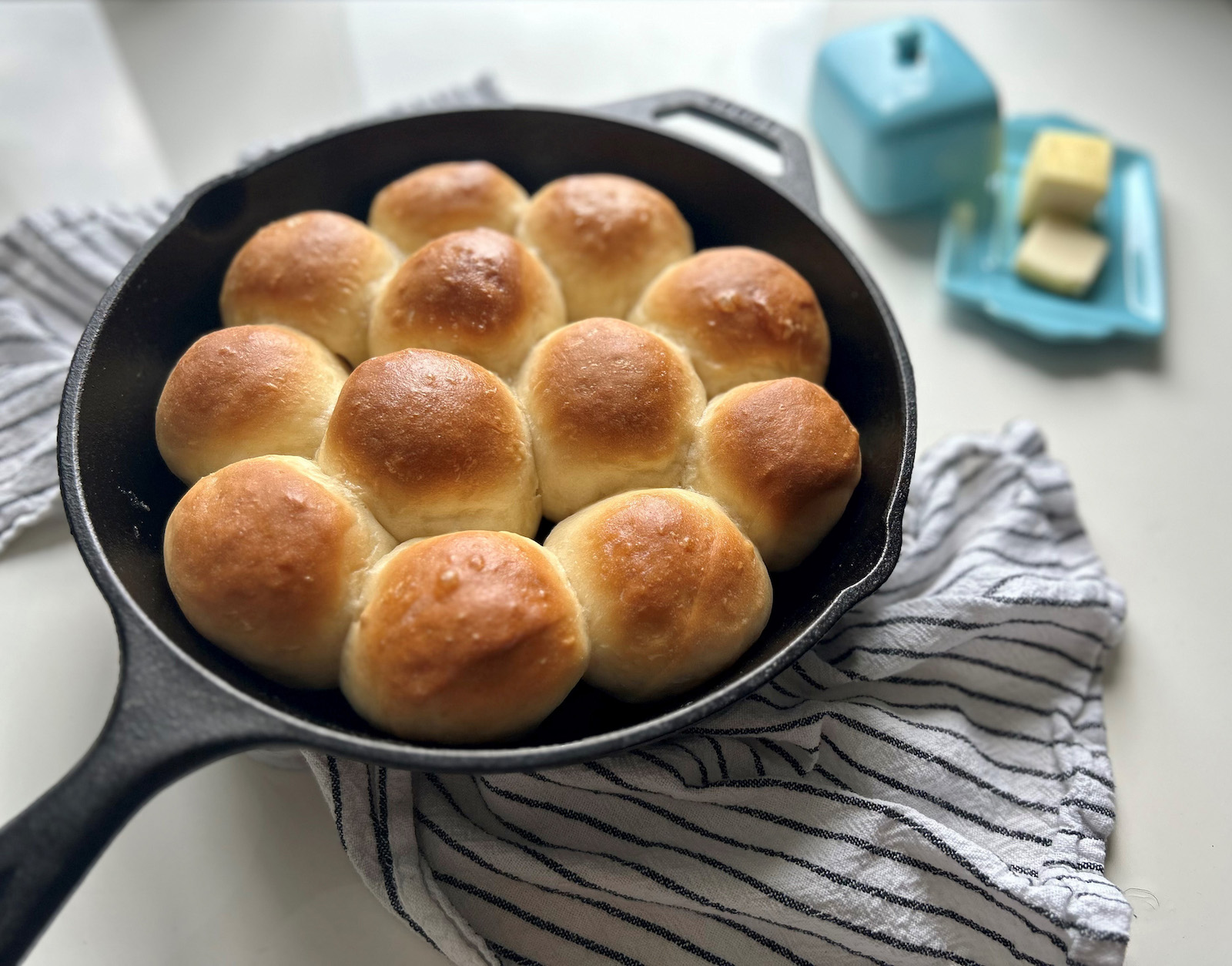Introducing the Food for Thought Series
In this series, chefs, farmers, historians, scholars, and other thinkers share their takes on food, consumption, cooking, and eating.
Art & Society
min read

Food is a basic human need. In our Food for Thought series, James Beard Award–winning journalist, scholar, and writer Cynthia Greenlee hosts a gathering of historians, food journalists, poets, chefs, and farmers and invites them to riff on food-related works of art in our permanent collection.
In this story, a print from our collection reminds chef Adrienne Cheatham of the church meals she grew up with—and of a recipe for buttered rolls.
Frank Hartley Anderson created the woodcut Church Supper in the mid-1930s. But I know this scene. I feel like I’ve lived it—or at least a more modern version of it.
Going to church was a weekly affair for most Americans in the early 20th century. For Black Americans particularly, church was a refuge, a place where you could dress nicely without being called “uppity” and gather without white people feeling threatened. The sanctuary was just that: a safe space to vent frustration about those opportunities denied due to racism and praise God for those given with love.
Church was a community where you could seek company, redemption, and nourishment for both souls and bellies.

Frank Hartley Anderson, Church Supper, 1935-1936, woodcut, Reba and Dave Williams Collection, Gift of Reba and Dave Williams, 2008.115.669
Gathering over Food after Service
I grew up attending Catholic church in the mid-1980s to early ’90s with family in Chicago and Jackson, Mississippi. Those were different, yet similar, experiences.
In Chicago, we’d meet in the Sunday school classroom for tuna salad and cucumber tea sandwiches, quiche lorraine, cookies, and 7-Up punch—all items that could be served cold or at room temperature after service. On special occasions, volunteers brought potluck dishes meant to be reheated and served on a buffet.
In Jackson, a rotating group of Church Ladies—the capital-letter matriarchs who were considered the best cooks and congregation members—were excused from service each week to spend the morning in the rectory kitchen. My sister and I would sneak down and see them seasoning chicken legs or pork chops, mixing cake batter, and rolling balls of dough for the highly anticipated dinner rolls. They arrived early each Sunday, gossiping and cooking while others filled the pews before the first notes bellowed out of the organ pipes.
Frank Hartley Anderson carved out a space that shows the humanity, dignity, and commonality of this intimate yet ordinary moment.
An Arena of Love and Care
After services where people gave voice to life’s joys and indignities the rectory became a cafeteria. But more than just refreshments and supper, it was an arena in which Black women cared for and loved on their community.
Non-Black artists rarely depicted that love and care with which Black people treated one another. In this work, Frank Hartley Anderson carved out a space that shows the humanity, dignity, and commonality of this intimate yet ordinary moment. Maybe he experienced it himself as a guest in a Black church.
This print seems to show the end of supper: cups of tea or coffee on the table, plates holding what may be cake, and women passing smaller items for nibbling. Some of the churchgoers are eating, while others listen attentively to a man in glasses who is likely the pastor. He gestures, possibly expanding on the message from the sermon or talking about the pressing issues of the day. I can hear the passionate way he speaks, his voice carrying over the clink of forks. Anderson’s use of dark tones evokes a solemn feeling of deep conversation.
Buttered Rolls

When I was growing up, gathering over food after service prolonged the feelings from the sermon and our connection with one another. Often part of post-Church suppers in both Chicago and Jackson, and always the first thing to go, made-from-scratch, freshly baked dinner rolls were my favorite. The browned, crested peaks gave way to fluffy interiors, buttery and slightly sweet. All nestled together in a round pan, they expressed the connection we felt breaking bread before going back to our separate lives. I can picture the curling wisps of steam that rose when we pulled them apart. I can smell the intoxicating yeasty aroma, as heady as knowing you were loved unconditionally by God.
Recipe makes 12 rolls.
Ingredients
Directions
Chef Adrienne Cheatham is author of Sunday Best: Cooking Up the Weekend Spirit Every Day. She grew up in restaurants managed by her mother and has since worked with chefs Eric Ripert at the Michelin-starred Le Bernandin and Marcus Samuelsson at Red Rooster. Chef Cheatham was a finalist on Season 15 of “Top Chef” and created the popular SundayBest popup hosted in secret locations across New York City.